It’s taken six months, but it looks like Xiaomi’s flagship phone lineup for 2023 is finally complete.
The top-spec Xiaomi 13 Ultra, which is now on sale, appears to be the final piece of the puzzle. It joins the regular 13, 13 Pro and 13 Lite in Europe, while there a few other variations that remain exclusive to Asia.
Here’s everything you need to know about the Xiaomi 13 Series, including pricing, release date and all the key specs.
When will the Xiaomi 13 Series be released?
The Xiaomi 13 Series began life on 11 December 2022, when the company officially launched the 13 and 13 Pro in China.
But we had to wait until 26 February 2023 for both phones to launch globally, alongside a more affordable 13 Lite that we hadn’t seen before. The latter went on sale immediately, but we had to wait until 14 March for the high-end models to go on sale.
Then there was the top-spec Xiaomi 13 Ultra, which was officially unveiled globally on 18 April. It’s now available in Europe, having been released on 12 June, but with one key exception: the UK.
However, you may wish import any of the phones which are unavailable in the US and UK. They should work with local SIM cards just fine, and European models have the full range of Google apps.
How much does the Xiaomi 13 cost?
Here’s the pricing for the Xiaomi 13 Series phones that have made it to Europe:
- Xiaomi 13 (8+256GB) – £849/€999
- Xiaomi 13 Pro (12+256GB) – £1,099/€1,299
- Xiaomi 13 Lite (8+128GB) – £449/€499
- Xiaomi 13 Ultra (12+512GB) – €1499 (not being sold in the UK)
As you might expect, the 13, 13 Pro and 13 Lite are all available from Xiaomi’s UK site.
The 13 Ultra is on sale at Xiaomi’s site in the likes of France and Spain, but you may be able to import one to the US or UK via the likes of AliExpress.
That pricing puts the Xiaomi 13, 13 Pro and 13 Ultra in flagship territory, while the 13 Lite is a mid-range contender.
What are the Xiaomi 13 specs and features?
So what should you expect from the Xiaomi 13 and 13 Pro? We’ll break it down by model:
Xiaomi 13
The Xiaomi 13 features an updated design, with a flat display and glossy, straight-edged body that’s immediately reminiscent of the recent iPhones. It also boasts an IP68 rating for dust and water protection.
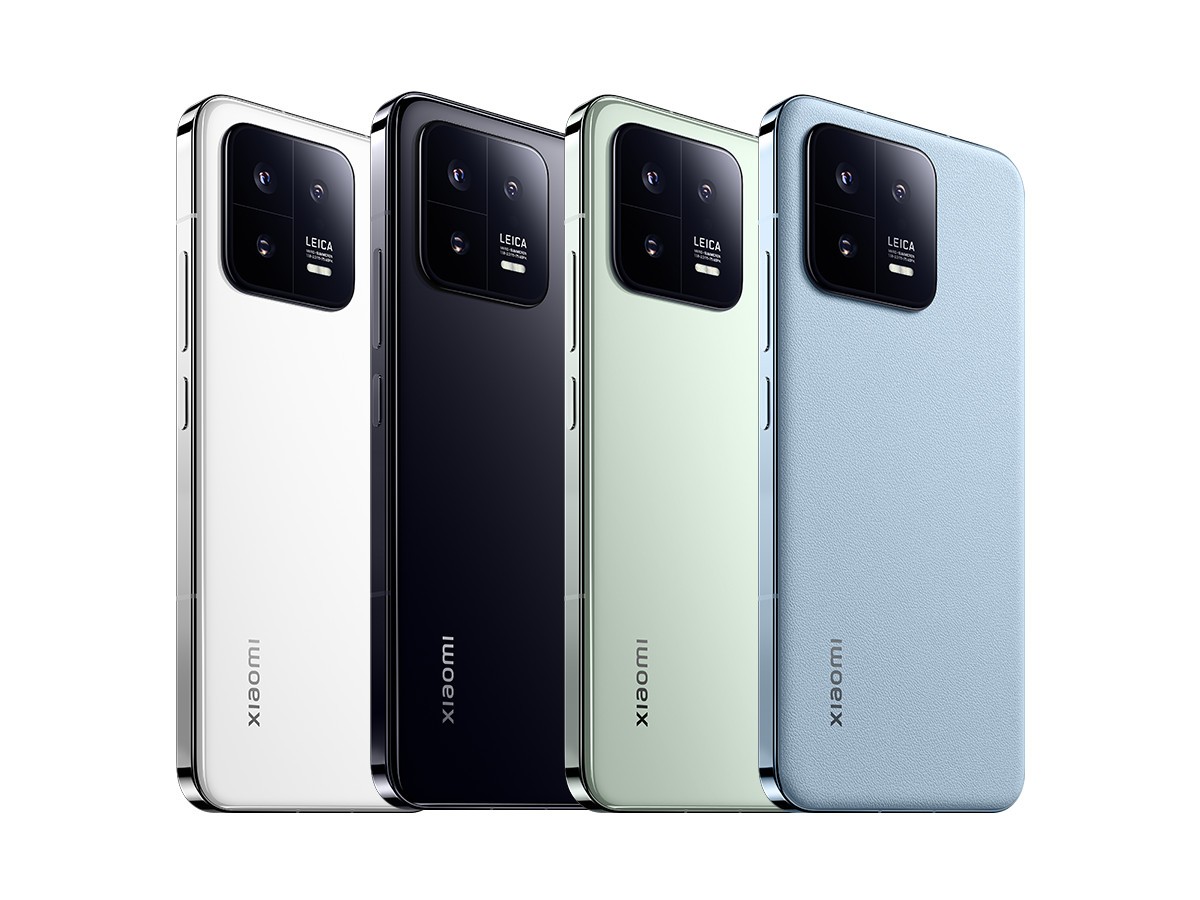
Xiaomi
It’s available in a few colours as standard in China (black, light green, light blue, grey and white), but only the black, green and white finishes have made it to the international model. It means there’s no option for the vegan leather found on the light blue version.
The Xiaomi 13 is a little bigger than last year’s 12, with a 6.36in OLED display. This is otherwise similar to the previous phone though, with a 1080 x 2400 resolution, 120Hz refresh rate, and support for a range of HDR standards.
Unsurprisingly, the phone is powered by the Snapdragon 8 Gen 2 chip, which is combined with 8/12GB of RAM, and 128/256/512GB of storage. The 128GB models use the slightly older UFS 3.1 storage standard, but the higher capacity versions jump to faster UFS 4.0.
Power comes from a 4500mAh battery that supports 67W wired charging, 50W wireless charging, and 10W reverse wireless charging.
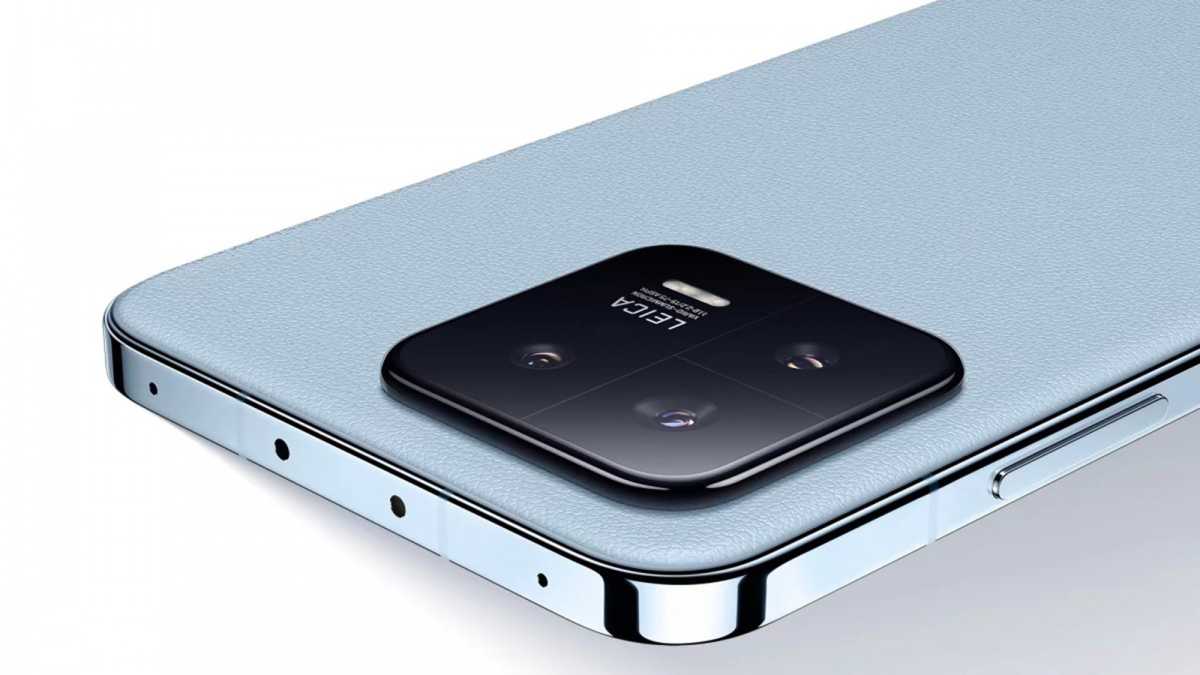
Xiaomi
As for the cameras, you can see that the phone has a Leica-branded triple camera on the rear. The main shooter is a 50Mp, f/1.8 camera with OIS, and it’s joined by a 10Mp, 3x telephoto camera and a 12Mp ultrawide. The inclusion of the telephoto is the biggest jump from the previous model. Finally, there’s a 32Mp selfie camera.
Here are the full specs:
- 6.36in 120Hz OLED display (1080×2400)
- Qualcomm Snapdragon 8 Gen 2
- 8/12GB RAM
- 128/256/512GB storage
- 4500mAh battery
- 67W wired charging
- 50W wireless charging
- Camera:
- 50Mp, f/1.8 main camera with OIS
- 10Mp, f/2.0, 3x telephoto camera with OIS
- 12Mp, f/2.2 ultrawide camera
- 32Mp, f/2.0 selfie camera
- IP68
- 152.8 x 71.5 x 8.0/8.1mm
- 185/189g
- Android 13 with MIUI 14
Xiaomi 13 Pro
Then there’s the Pro, which looks a little different. For one, it boasts a curved display and body, closer in style to previous Xiaomi flagships.
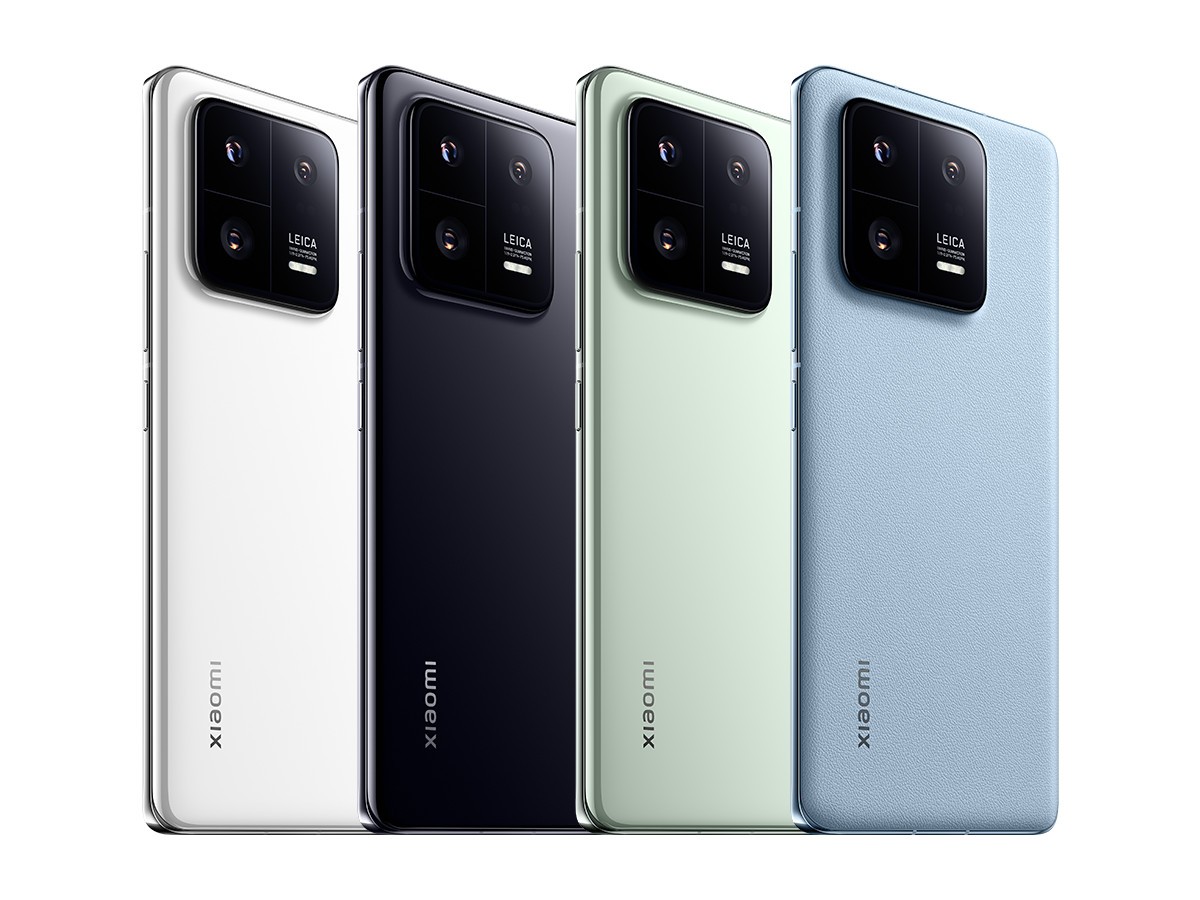
Xiaomi
There are fewer colours to choose from in China than the regular 13 (white, black, green and light blue), but you only get white or black internationally. Both feature a ceramic rather than glass back, but you miss out on the light blue vegan leather option once again. Like the 13, it has an IP68 rating.
The Pro is also significantly larger than the 13, with a 6.73in display that uses LTPO tech for a dynamic variable refresh rate (though still up to 120Hz) and has a higher 1440 x 3200 resolution.
The chipset is once again the Snapdragon 8 Gen 2, and it launches with the same set of RAM and storage options as the standard phone.
The battery is a little bigger at 4820mAh, and uses Xiaomi’s Surge G1 chip to deliver 120W wired charging, 50W wireless charging, and 10W reverse wireless charging.
Other than the display, the camera is inevitably where the biggest upgrades from the 13 are to be found, although at a glance things seem similar.
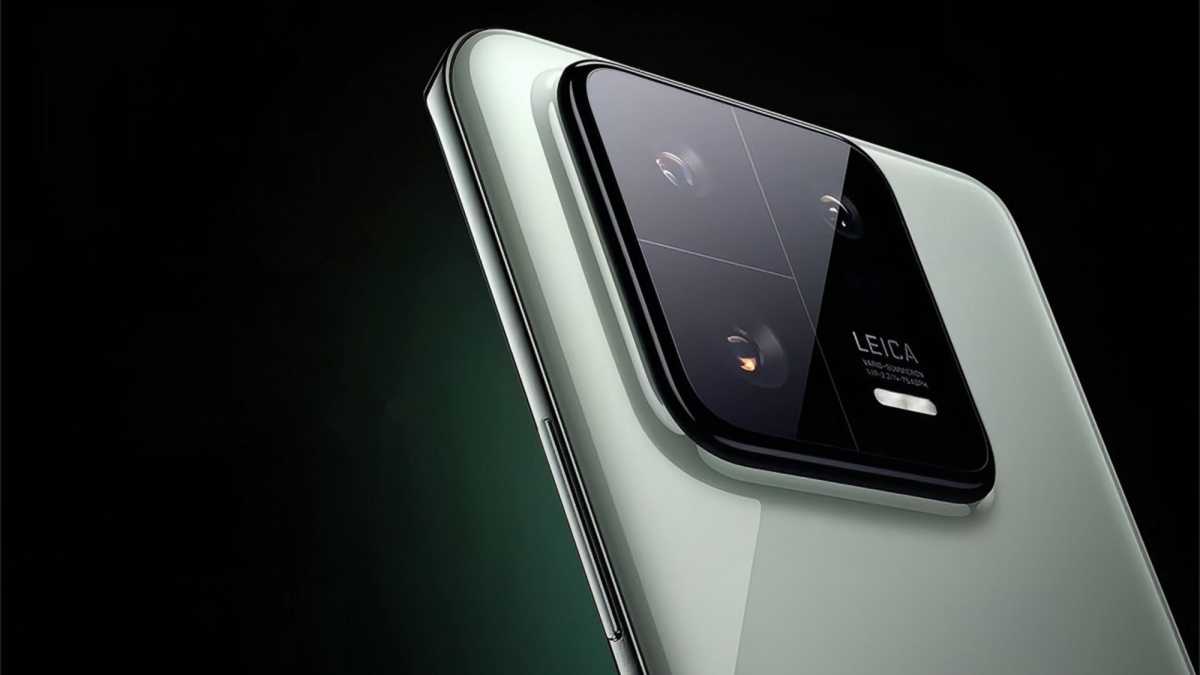
Xiaomi
The main lens is still 50Mp, but uses the much larger 1in Sony IMX989 sensor – the same one used to great effect in the Xiaomi 12S Ultra. Here’s it’s at an f/1.9 aperture, and of course features OIS.
The telephoto lens is also a 50Mp sensor, with a 3x zoom level and aperture of f/2.0. Thanks to a new ‘floating’ lens structure, it’s also capable of focusing on objects just 10cm away, in theory making it more versatile than most telephotos out there.
Then there’s the ultrawide, which is the same as last year’s. It’s also a 50Mp shooter, with an f/2.2 aperture and autofocus. Finally, the 32Mp selfie camera is the same as on the 13.
Here are the full specs:
- 6.73in 120Hz LTPO OLED display (1440×3200)
- Qualcomm Snapdragon 8 Gen 2
- 12GB RAM
- 512GB storage
- 4820mAh battery
- 120W wired charging
- 50W wireless charging
- Camera:
- 50Mp, f/1.9 main camera with OIS
- 50Mp, f/2.0, 3x telephoto camera with OIS
- 50Mp, f/2.2 ultrawide camera
- 32Mp, f/2.0 selfie camera
- IP68
- 163.2 x 74.6 x 9.1 mm
- 227g
- Android 13 with MIUI 14
Xiaomi 13 Ultra
So, what does the Xiaomi 13 Ultra do differently to the 13 Pro? Essentially, it’s all centred around the rear cameras, which are housed within the large, round module you see below.
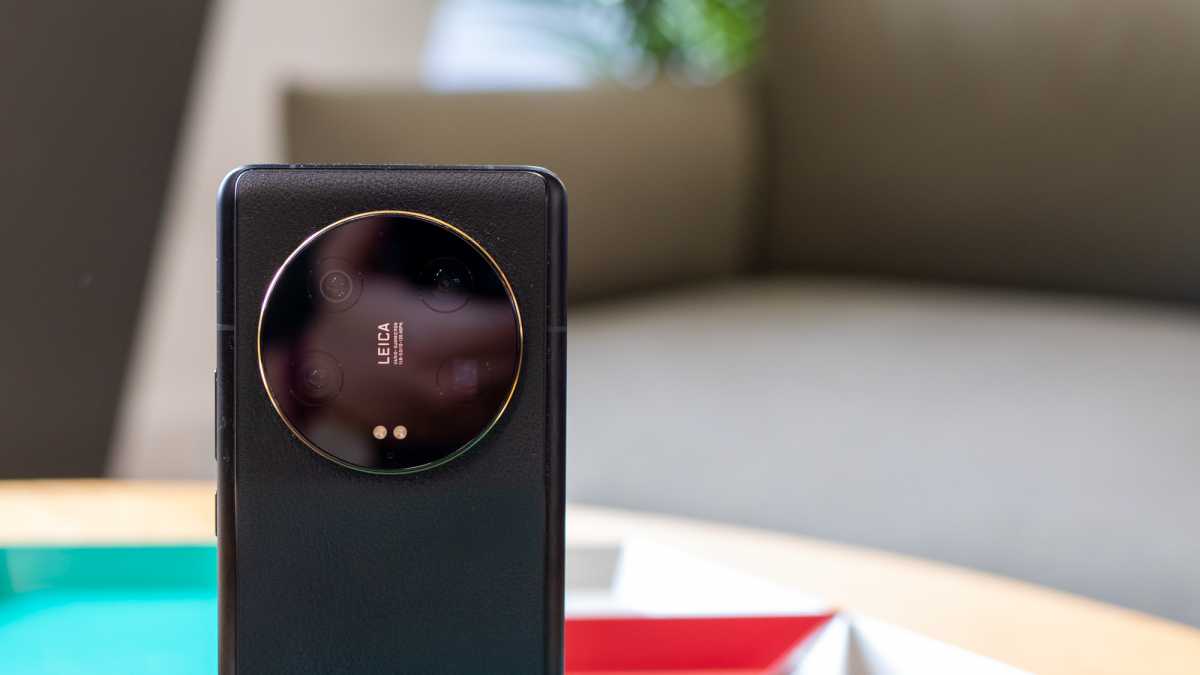
Dominic Preston / Foundry
The 50Mp, 1in Sony IMX989 from the 13 Pro is still here, but now it includes a variable aperture. You can switch between f/1.9 and f/4.0, allowing you to dynamically adjust the depth of field according to the scene. A variable aperture provides a lot more control over the amount of light in a scene, and it’s still very rare on smartphones.
Next to it, you’ll now find a second 50Mp telephoto lenses. The f/2.0 sensor with 3x optical zoom is joined by a new f/3.0 camera, which can reach 5x before any digital zoom kicks in.
But the 50Mp ultrawide camera remains, as does the 32Mp selfie camera. Much of the rest of the phone is unchanged, including display and processing power – aside from the option for 16GB of RAM and/or 1TB of storage.
There’s a slightly larger 5000mAh battery here, but charging speeds are capped at 90W instead of 120W. It’s also the only Xiaomi 13 series phone to be equipped with a vegan leather back, which is available in Black, White or Olive Green (shown below).
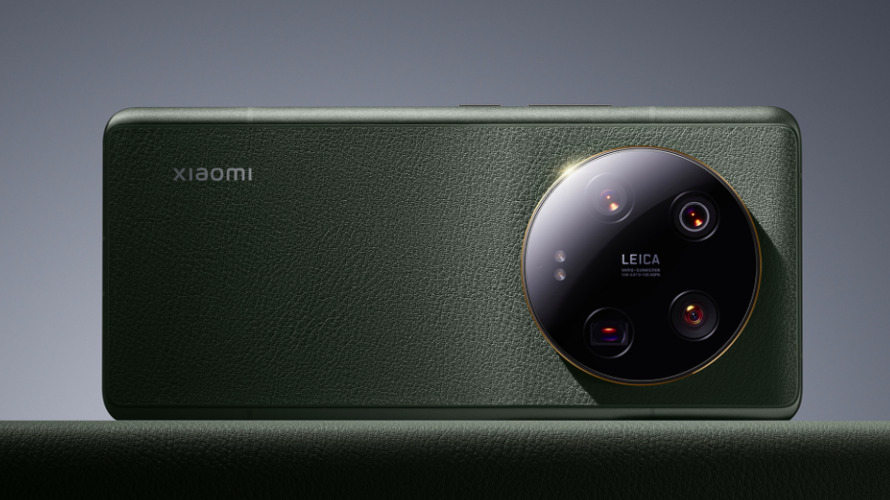
Xiaomi
Here are the full specs:
- 6.73in 120Hz LTPO OLED display (1440×3200)
- Qualcomm Snapdragon 8 Gen 2
- 12/16GB RAM
- 256GB/512GB/1TB storage
- 5000mAh battery
- 90W wired charging
- 50W wireless charging
- Camera:
- 50Mp, 1in main camera with OIS and variable aperture (f/1.9 or f/4.0)
- 50Mp, f/2.8 telephoto camera with OIS and 3.2x optical zoom
- 50Mp, f/3.0, telephoto with OIS and 5x optical zoom
- 50Mp, f/1.8 ultrawide camera
- 32Mp, f/2.0 selfie camera
- IP68
- 162.9 x 74.6 x 8.4/8.7mm
- 227g
- Android 13 with MIUI 14
Xiaomi 13 Lite
At the international launch event, Xiaomi added a third model to the 13 series, although it’s much more affordable than the 13 and 13 Pro.
Nearly every spec has been downgraded as a result, but it still looks competitive for a mid-range phone. It still features a 6.55in 120Hz OLED display at an identical resolution to the regular 13.
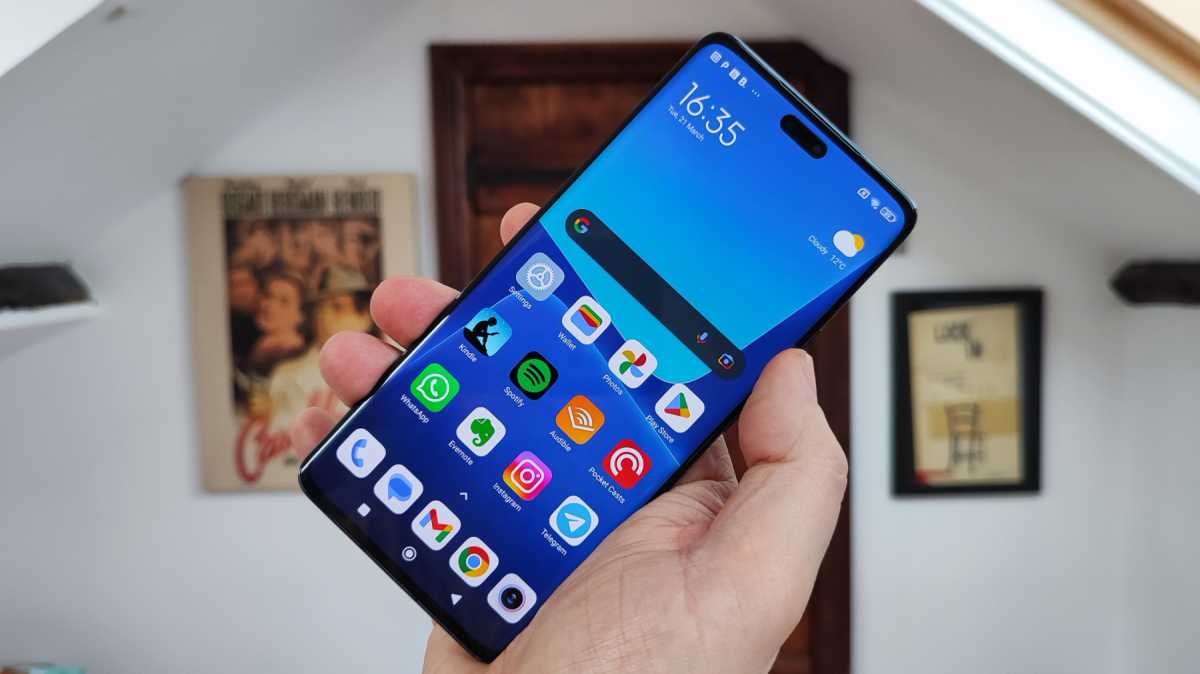
Martyn Casserly
However, inevitable compromises come in the form of the less capable Snapdragon 7 Gen 1 chipset (alongside a maximum of 8GB of RAM) and a slightly smaller 4500mAh battery.
But the cameras are where trade-offs are most obvious, with a downgraded 50Mp main sensor joined by just 12Mp ultrawide and 2Mp macro. It means there’s no telephoto lens, although you do still get a 32Mp selfie camera.
However, despite retaining the glass back, it’s relatively lightweight at 171g. There are also some more colourful finishes coming to an international audience, with a choice between blue, pink and black. Still no vegan leather option, though.
Here are the full specs:
- 6.55in 120Hz OLED display (1080×2400)
- Qualcomm Snapdragon 7 Gen 1
- 8GB RAM
- 128/256GB storage
- 4500mAh battery
- 67W wired charging
- 50Mp, f/1.8 main camera
- 8Mp, f/2.0 ultrawide camera
- 2Mp macro camera
- 32Mp, f/2.4 selfie camera
- 162.9 x 74.6 x 8.4/8.7mm
- 171g
- Android 13 with MIUI 14
Will there be Xiaomi 13S phones later in the year?
This is something we know for sure. Xiaomi has confirmed that there will be no half-year ‘S’ updates for any of the Xiaomi 13 series phones.
The news comes via a Weibo post from none other than Xiaomi CEO Lei Jun, whose translated message reads “Mi 13 currently has no plans to make a half-generation upgraded version. Don’t wait for Xiaomi 13S”.
It doesn’t rule out half-year updates to Xiaomi flagships in the future, but there’ll be none in 2023.
